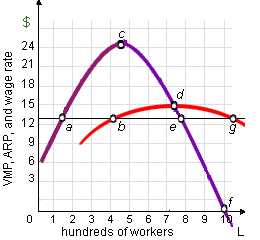When the hourly wage rate for workers this purely competitive firm hires is approximately of $13, this will operate at: (1) point a. (2) point b. (3) point c. (4) point d. (5) point e.

Can someone explain/help me with best solution about problem of Economics...